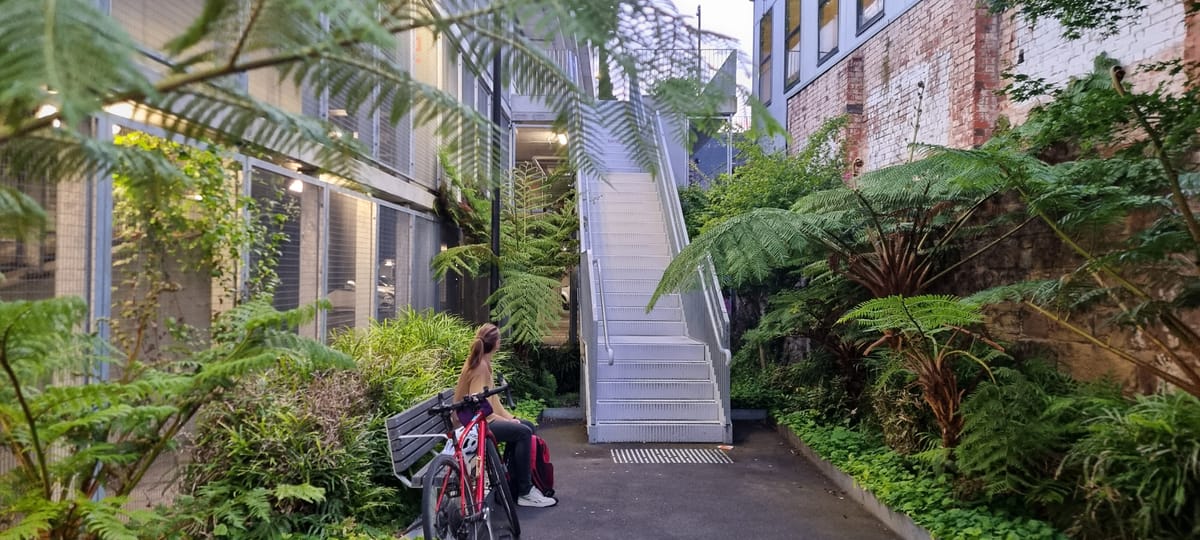Addressing Climate Change on Our City Streets

A Call to Action
Climate change is one of the defining challenges of our time, and its effects are being felt everywhere—from rising sea levels to unpredictable weather patterns. Cities, as hubs of human activity, play a critical role in addressing climate change, and the design and function of our streets are at the heart of this transformation. By reimagining our streets to prioritize sustainability, we can create urban spaces that are resilient, livable, and environmentally friendly.
1. The Role of Streets in Climate Change
Streets are more than just pathways for cars; they are the arteries of our cities. Unfortunately, many streets are dominated by car traffic, which contributes significantly to greenhouse gas emissions. Transport accounts for around 18% of Australia's total emissions, with urban vehicle use being a major contributor. Addressing climate change requires reducing these emissions, and our streets are the perfect starting point.
Key issues include:
- Emissions from Cars: Heavy reliance on fossil-fueled vehicles makes urban areas a hotspot for carbon emissions.
- Urban Heat Islands: Asphalt and concrete streets absorb and retain heat, exacerbating the urban heat island effect.
- Limited Green Space: Many streets lack greenery, which could otherwise help sequester carbon and cool the environment.
2. Streets Designed for People, Not Just Cars
Transforming our streets to prioritize people over vehicles is a vital step in reducing emissions and combating climate change. Some practical approaches include:
- Promoting Active Transport: Investing in cycling and pedestrian infrastructure encourages people to walk or ride instead of driving. For example, creating more separated cycleways, as proposed in Hobart’s Collins Street Vision, could drastically reduce car dependency.
- Expanding Public Transport: Accessible and efficient public transport networks reduce the need for individual car trips, significantly lowering emissions.
- Implementing Green Streets: Integrating trees, plants, and permeable surfaces into street design helps reduce urban heat and captures carbon dioxide.
3. Australian Cities Leading the Way
Several Australian cities have taken bold steps to address climate change through sustainable street design:
- Melbourne: The city’s Green Our City Strategic Action Plan includes urban forest strategies that aim to increase tree coverage on streets, providing shade and reducing urban heat.
- Sydney: The Sydney Streets project is pedestrianizing parts of the CBD, reducing car traffic and encouraging walking and cycling.
- Brisbane: Active transport initiatives, such as the extensive bike path network, have reduced car use and encouraged more sustainable transport options.
These examples provide a clear roadmap for how Hobart can transform its streets for a greener future.
4. Opportunities for Hobart
Hobart has a unique opportunity to lead Tasmania in climate-smart urban design. Here’s how we can make our streets climate-resilient:
- Electrify Transport: Introduce more electric buses and EV charging stations to encourage the adoption of clean vehicles.
- Expand Green Infrastructure: Planting trees along major streets like Elizabeth Street or Collins Street would not only reduce emissions but also make these areas more pleasant for pedestrians and cyclists.
- Embrace Mixed-Use Streets: Streets that balance pedestrian, cycling, and vehicle use can reduce car dependency and foster community connection.
5. The Benefits of Climate-Smart Streets
Redesigning streets to address climate change doesn’t just benefit the environment—it improves the quality of life for everyone. Benefits include:
- Improved Air Quality: Fewer cars and more green spaces lead to cleaner air, benefiting public health.
- Lower Energy Costs: Green streets reduce the need for air conditioning by cooling urban areas naturally.
- Vibrant Communities: Streets designed for people, not just cars, encourage social interaction and economic activity.
6. A Call to Action for Hobart
Hobart is already feeling the impacts of climate change, from more intense storms to rising temperatures. Transforming our streets is a tangible, impactful way to reduce emissions, adapt to changing conditions, and create a city that future generations can thrive in.
It’s time for Hobart to act boldly:
- Advocate for Change: Support policies that prioritize sustainable street design.
- Engage the Community: Host forums to involve residents in reimagining their streets.
- Invest in Infrastructure: Commit resources to projects that promote active transport, public transit, and green streets.
By addressing climate change on our city streets, we can make Hobart a leader in sustainability and resilience. The streets we design today will shape the city we leave for tomorrow.




